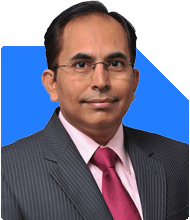Software Engineer with 5 Years Experience, 100K Salary - How Many Years to Achieve Financial Freedom with 15 Lakhs Investment?
Ramalingam Kalirajan |10908 Answers |Ask -Follow
Mutual Funds, Financial Planning Expert - Answered on Aug 21, 2024
He has an MBA in finance from the University of Madras and is a certified financial planner.
He is the director and chief financial planner at Holistic Investment, a Chennai-based firm that offers financial planning and wealth management advice.... more

Hi If I want to have a monthly income of 35k as SWP how much should I have in mf corpus?
Factors Affecting SWP
Several factors influence the amount of corpus required for an SWP. These factors include:
Withdrawal Rate: The percentage of your corpus you withdraw each month. A lower withdrawal rate preserves your corpus for a longer time.
Expected Rate of Return: The return you expect from your mutual fund investment. Higher returns may allow for a smaller initial corpus.
Investment Tenure: The longer you plan to withdraw, the larger the corpus you'll need. Planning for a long-term SWP is crucial.
Estimating the Required Corpus
To calculate the required corpus, you need to consider the expected rate of return and the withdrawal rate. Let's break it down:
Expected Rate of Return: Typically, equity mutual funds can offer an average return of 10-12% over the long term. However, it's essential to remain conservative in your estimates to account for market volatility.
Withdrawal Rate: For a sustainable withdrawal plan, a withdrawal rate of 4-5% per year is often recommended. This rate helps preserve the principal while providing regular income.
Monthly Income: You want to generate Rs 35,000 per month.
Given these factors, a conservative approach would be to estimate a corpus based on a 4-5% annual withdrawal rate.
Example Estimation
If you wish to withdraw Rs 35,000 per month (Rs 4,20,000 per year) and maintain a sustainable withdrawal rate, you may need a corpus in the range of Rs 84 lakhs to Rs 1.05 crores. This estimation assumes a 5% annual withdrawal rate.
However, it's important to note that this is a rough estimate. The actual corpus required can vary based on market conditions, inflation, and your specific needs.
Benefits of Actively Managed Funds Over Index Funds
When investing in mutual funds, actively managed funds often outperform index funds in the long run. Here's why:
Expert Management: Actively managed funds are handled by experienced fund managers who actively pick stocks to outperform the market.
Flexibility: Fund managers can adapt to market changes and make strategic decisions, which may lead to better returns.
Potential for Higher Returns: Unlike index funds that mirror the market, actively managed funds aim to beat the market, offering the potential for higher returns.
Disadvantages of Index Funds
Index funds, while simple and low-cost, have their drawbacks:
No Outperformance: Index funds only match the market's performance, offering no chance of beating it.
Lack of Flexibility: Index funds follow a fixed portfolio of stocks, regardless of market conditions, which might not always be beneficial.
Limited Downside Protection: During market downturns, index funds can suffer as they are tied to the overall market performance.
Importance of Regular Funds Through a Certified Financial Planner
Investing through regular mutual funds with the guidance of a Certified Financial Planner (CFP) can be highly beneficial:
Personalized Advice: A CFP provides tailored investment strategies based on your financial goals and risk appetite.
Continuous Monitoring: Regular funds through a CFP come with ongoing monitoring and adjustments to your portfolio, ensuring alignment with your goals.
Expertise and Experience: A CFP brings expertise and experience to your investment planning, helping you navigate market complexities.
Risks and Considerations
While SWP provides a regular income, it comes with certain risks:
Market Volatility: Your returns may vary due to market fluctuations, affecting the longevity of your corpus.
Inflation: Inflation erodes the purchasing power of your withdrawals over time. It's crucial to account for inflation in your planning.
Longevity of Corpus: If the withdrawal rate is too high, you risk depleting your corpus faster than expected. A balanced approach is necessary.
Reinvesting for Growth
To ensure your SWP lasts longer, consider reinvesting any excess returns. For example:
Dividend Reinvestment: Choose funds that offer dividend reinvestment options to grow your corpus.
Periodic Reviews: Regularly review your SWP plan and make adjustments based on market conditions and your financial needs.
Diversification of Investments
Diversification is key to maintaining a stable SWP:
Balanced Funds: Invest in a mix of equity and debt funds to balance risk and return.
Multi-Cap Funds: These funds invest across market capitalizations, providing exposure to various sectors and reducing risk.
Debt Funds: Include debt funds in your portfolio for stability and regular income, especially during market downturns.
The Role of Insurance
While planning your SWP, don't overlook the importance of insurance:
Life Insurance: Ensure you have adequate life insurance to protect your family’s financial future.
Health Insurance: Secure comprehensive health insurance to cover medical expenses and prevent dipping into your SWP corpus.
Finally
Achieving a stable monthly income through SWP requires careful planning and a well-structured mutual fund portfolio. By considering factors like withdrawal rate, expected returns, and market conditions, you can estimate the corpus needed to meet your income goals.
Actively managed funds, guided by a Certified Financial Planner, offer the potential for better returns and tailored advice, ensuring your SWP plan aligns with your financial objectives. Remember, a balanced approach with diversification and regular reviews is key to a successful SWP strategy.
Best Regards,
K. Ramalingam, MBA, CFP
Chief Financial Planner
www.holisticinvestment.in
You may like to see similar questions and answers below
Ramalingam Kalirajan |10908 Answers |Ask -Follow
Mutual Funds, Financial Planning Expert - Answered on Jul 17, 2024
Ramalingam Kalirajan |10908 Answers |Ask -Follow
Mutual Funds, Financial Planning Expert - Answered on Jul 23, 2024
Ramalingam Kalirajan |10908 Answers |Ask -Follow
Mutual Funds, Financial Planning Expert - Answered on Jan 06, 2025
Ramalingam Kalirajan |10908 Answers |Ask -Follow
Mutual Funds, Financial Planning Expert - Answered on Feb 04, 2025
Janak Patel |72 Answers |Ask -Follow
MF, PF Expert - Answered on Oct 06, 2025
Ramalingam Kalirajan |10908 Answers |Ask -Follow
Mutual Funds, Financial Planning Expert - Answered on Dec 20, 2025
Ramalingam Kalirajan |10908 Answers |Ask -Follow
Mutual Funds, Financial Planning Expert - Answered on Dec 20, 2025
Naveenn Kummar |237 Answers |Ask -Follow
Financial Planner, MF, Insurance Expert - Answered on Dec 20, 2025
Ramalingam Kalirajan |10908 Answers |Ask -Follow
Mutual Funds, Financial Planning Expert - Answered on Dec 19, 2025
Nayagam P P |10859 Answers |Ask -Follow
Career Counsellor - Answered on Dec 19, 2025
Ramalingam Kalirajan |10908 Answers |Ask -Follow
Mutual Funds, Financial Planning Expert - Answered on Dec 19, 2025
Ramalingam Kalirajan |10908 Answers |Ask -Follow
Mutual Funds, Financial Planning Expert - Answered on Dec 19, 2025
Ramalingam Kalirajan |10908 Answers |Ask -Follow
Mutual Funds, Financial Planning Expert - Answered on Dec 19, 2025
Radheshyam Zanwar |6751 Answers |Ask -Follow
MHT-CET, IIT-JEE, NEET-UG Expert - Answered on Dec 19, 2025
Radheshyam Zanwar |6751 Answers |Ask -Follow
MHT-CET, IIT-JEE, NEET-UG Expert - Answered on Dec 19, 2025


























